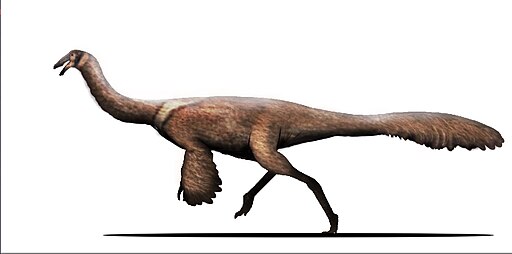The Bird-Mimic Dinosaur
Ornithomimus, meaning “bird mimic,” was a genus of theropod dinosaur that lived during the Late Cretaceous period, approximately 75-65 million years ago.

| Meaning | Bird mimic [Ornith-o-mimus] |
| Pronunciation | or-NITH-oh-MY-mus |
| When: | Late Cretaceous (about 76–66 million years ago) |
| Where: | North America (Canada, USA) |
| What: | Theropod (ornithomimid, omnivorous) |
| Weight: | Estimated around 150 kg (330 pounds) |
| Length: | Approximately 3.5 meters (11.5 feet) |
| Diet: | Omnivorous (ate plants, insects, and small animals) |
| Discovered: | First described by Othniel Charles Marsh in 1890 |
Found in North America and Asia, Ornithomimus was characterized by its long, slender legs and arms, which gave it a graceful and bird-like appearance.
Measuring around 3-4 meters (10-13 feet) in length and weighing up to 180 kilograms (400 pounds), Ornithomimus was a fast and agile runner, capable of reaching speeds similar to modern-day ostriches.
It had a toothless beak and sharp claws, suggesting it was primarily a omnivore or herbivore, feeding on plants, small animals, and possibly eggs.
Ornithomimus is notable for its adaptations for speed and agility, making it a successful predator or scavenger in its ecosystem.
